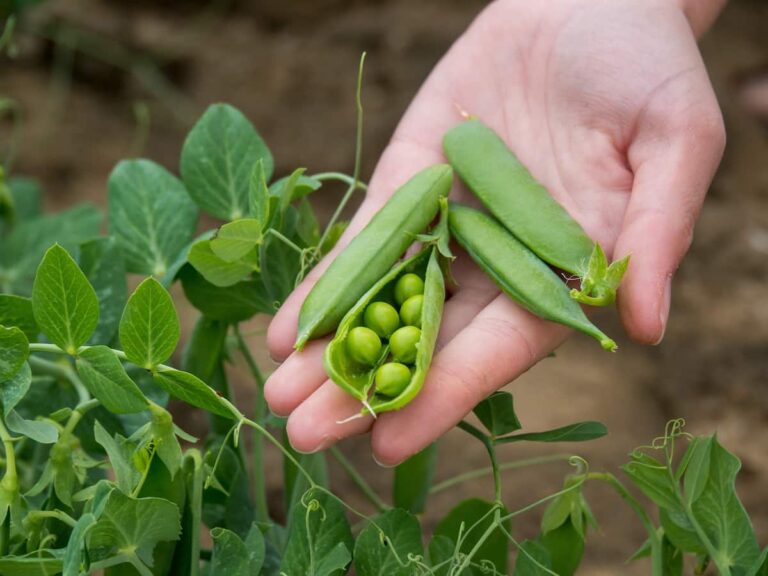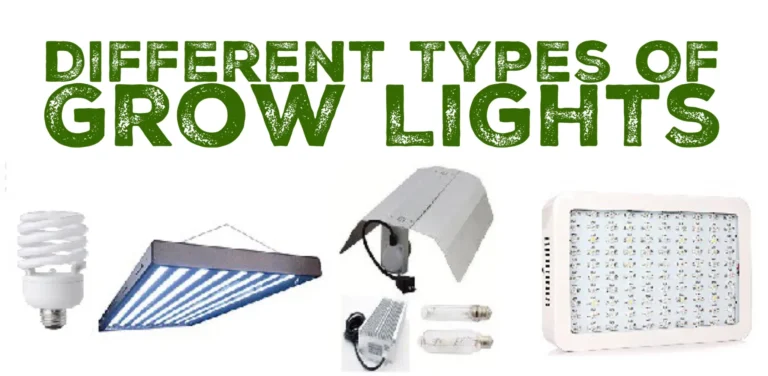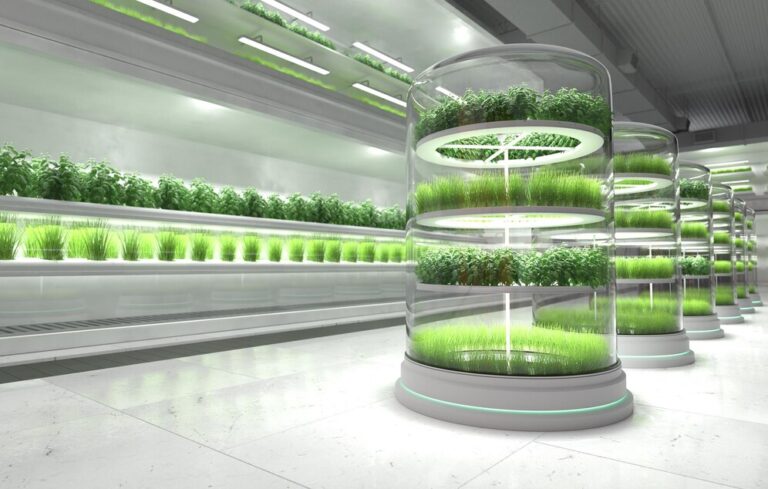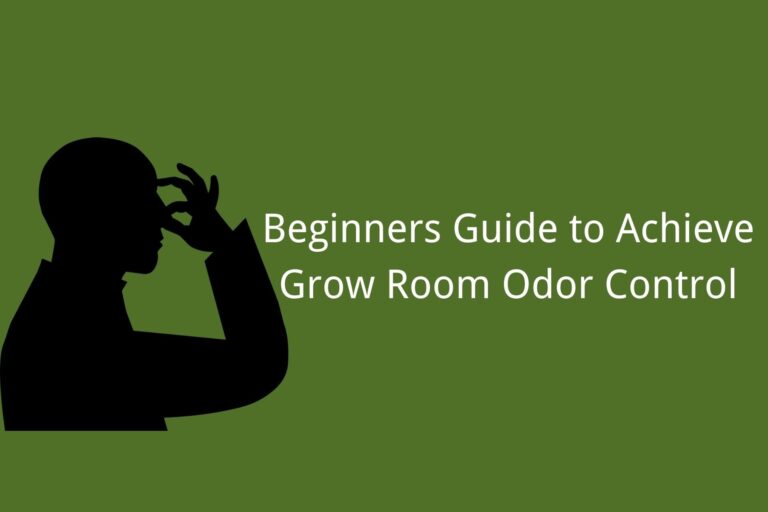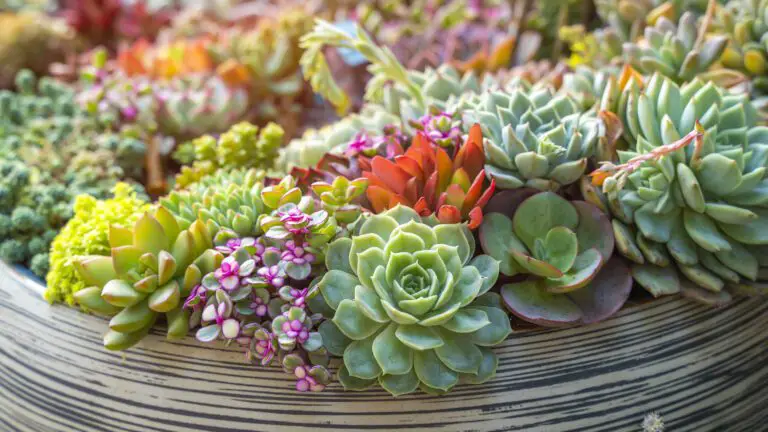Beginners Guide to Choosing and Sizing ACs: How to Keep Your Grow Room Cool and Comfortable
Table of Contents
Understanding the Importance of Proper Temperature Control in a Grow Room
Proper temperature control is essential in a grow room to ensure optimal plant growth and yields. Temperature plays a crucial role in the photosynthesis process, where plants convert light into energy for growth and development. Different plant species have specific temperature preferences, and deviating from these optimal ranges can have adverse effects on their health and productivity.
Inadequate temperature control in a grow room can lead to various problems. High temperatures can cause heat stress, wilting, and even death of plants. On the other hand, low temperatures can slow down the plant’s metabolic processes, reduce nutrient uptake, and hinder overall growth. Fluctuating temperatures can also disrupt the plant’s biological rhythms, affecting flowering, fruiting, and other important developmental stages.

Achieving and maintaining the right temperature in a grow room is crucial for the success of any cultivation endeavor. It provides the ideal conditions for plants to thrive, ensuring they are not subjected to extreme temperatures that could compromise their health and productivity. With proper temperature control, growers can create a stable and favorable environment that maximizes plant growth and ultimately leads to higher yields.
Factors to Consider When Choosing an Air Conditioning System for Your Grow Room
Choosing the right air conditioning system for your grow room is crucial for creating optimal conditions for your plants. There are several factors to consider when making this decision.
First and foremost, you need to consider the size and capacity requirements of your grow room. This will determine the cooling load and the amount of air conditioning power you will need. A general rule of thumb is to have one ton of cooling capacity for every 1000 square feet of grow space. However, factors such as lighting, insulation, and plant density may also affect your cooling needs. It is important to accurately measure the dimensions of your grow room and take into account any additional heat sources to ensure you choose an air conditioning system that can handle the cooling demands of your specific setup.
Another important consideration is energy efficiency. Growing plants indoors can consume a significant amount of energy, and inefficient air conditioning systems can contribute to high electricity bills. Look for AC units that have high energy efficiency ratings, such as those with Energy Star certification. These units are designed to use less energy while still providing effective cooling. Investing in an energy-efficient system will not only help lower your operating costs but also reduce your environmental impact.

In addition to size and energy efficiency, you should also take into account noise levels and vibration control when choosing an air conditioning system for your grow room. Loud and disruptive noises can stress out your plants and interfere with their growth. Look for AC units with noise-reducing features, such as insulated cabinets or variable speed fans. This will help create a more comfortable and peaceful environment for your plants to thrive.
Considering these factors will help you make an informed decision when choosing an air conditioning system for your grow room. By selecting the right size and capacity, prioritizing energy efficiency, and considering noise levels, you can create the ideal environment for your plants to flourish.
Evaluating the Size and Capacity Requirements for Your Grow Room AC
When it comes to evaluating the size and capacity requirements for your grow room air conditioning (AC) system, several factors need to be considered. One of the most critical factors is the size of your grow room. The square footage of your grow room will determine the cooling capacity needed to maintain the optimal temperature and humidity levels. It is crucial to accurately measure the length, width, and height of the grow room to calculate the total area for cooling.
Another factor to consider is the heat load generated by your grow lights and other equipment. Grow lights produce intense heat, which can significantly affect the temperature in your grow room. It is essential to know the heat output of your lights and other devices to determine the additional cooling capacity required. Additionally, factors such as insulation, ventilation, and the number of plants in your grow room can also affect the size and capacity requirements of your AC system. By taking these factors into account, you can ensure that your grow room AC system is appropriately sized to provide optimal temperature control for your plants’ growth and health.
Exploring Different Types of Air Conditioning Systems Suitable for Grow Rooms
When it comes to choosing the right air conditioning system for your grow room, there are several types to consider. Each type has its own advantages and limitations, so it’s important to understand their suitability for your specific needs.
One popular option is the split system air conditioner. This type consists of two units – an indoor unit that cools the air and an outdoor unit that dissipates the heat. Split systems are known for their energy efficiency and quiet operation, making them a great choice for smaller grow rooms. They are also relatively easy to install and maintain.
Another option to consider is the ductless mini-split system. Similar to split systems, ductless mini-splits have indoor and outdoor units. However, they don’t require ductwork, making them a convenient solution for grow rooms that lack ventilation systems. Ductless mini-splits offer flexibility in terms of installation and provide individual temperature control for different zones in your grow room.
If you have a larger grow room, a packaged central air conditioning system might be a better fit. This type of system combines all components in one package, including the compressor, condenser, and evaporator. Packaged central air conditioners are designed to handle high cooling loads and are often more powerful and efficient compared to other types. However, they require more space for installation and can be more expensive upfront.

It’s important to assess your specific requirements, including the size of your grow room, the amount of heat generated by your lighting system, and the desired level of temperature control. By understanding the different types of air conditioning systems available, you can make an informed decision that will support optimal plant growth in your grow room.
Assessing the Energy Efficiency of AC Units for Cost-Effective Operation
Assessing the energy efficiency of AC units is crucial for maintaining a cost-effective operation in your grow room. The energy consumption of your air conditioning system can have a significant impact on both your budget and the environment. By choosing an energy-efficient AC unit, you can reduce your electricity expenses while minimizing your carbon footprint.
To assess the energy efficiency of AC units, it is important to consider the Seasonal Energy Efficiency Ratio (SEER) rating. SEER measures the cooling output of an air conditioner over a typical cooling season divided by the total electric energy input during the same period. The higher the SEER rating, the more efficient the unit, resulting in lower energy consumption and cost. It is recommended to choose an AC unit with a SEER rating of 14 or higher for optimal energy efficiency.
Additionally, you should also look for AC units with the Energy Star certification. These units meet strict guidelines set by the Environmental Protection Agency (EPA) to ensure energy efficiency and environmental responsibility. Energy Star certified AC units not only save energy but also provide superior performance, comfort, and durability. By selecting an AC unit with this certification, you can be confident in its efficiency and contribute to a sustainable grow room operation.
Determining the Optimal Placement of Your AC Unit in the Grow Room
Proper placement of your AC unit in the grow room is crucial for maintaining consistent temperature control and optimizing plant growth. When determining the optimal placement for your AC unit, there are several factors to consider.
Firstly, you’ll want to ensure that the AC unit is placed strategically to provide even distribution of cooled air throughout the entire grow room. This can be achieved by positioning the unit in close proximity to the plant canopy, as plants are most sensitive to temperature fluctuations at this level. Placing the AC unit too far away from the plants may result in uneven cooling and inconsistent temperature regulation.
| Factor | Considerations |
|---|---|
| Temperature Distribution | Place the AC unit to ensure even temperature distribution |
| Air Circulation | Consider positioning for optimal air circulation |
| Proximity to Heat Sources | Keep the AC away from heat-emitting equipment or lights |
| Size and Capacity of AC Unit | Ensure the AC unit is appropriately sized for the room |
| Humidity Control | Position for effective control of humidity levels |
| Accessibility for Maintenance | Choose a location that allows easy access for maintenance |
| Noise Levels | Consider placing the AC away from sensitive areas |
| Energy Efficiency | Optimize placement for energy-efficient cooling |
| Airflow Direction | Align the unit to promote the desired airflow direction |
| Potential Obstructions | Avoid obstructing airflow with walls or obstacles |
| Light and UV Exposure | Protect the AC from direct exposure to light or UV rays |
Another aspect to consider is the location of the air intake and exhaust vents. It is recommended to position the intake vent near the hottest area of the grow room, as this will allow the AC unit to draw in the warm air and cool it down effectively. The exhaust vent should ideally be placed in a position that facilitates the removal of cooled air from the grow room. This can be achieved by positioning the exhaust vent near the top or opposite end of the grow room, allowing the cooled air to circulate and maintain a constant temperature throughout the space.
By carefully evaluating these factors and strategically placing your AC unit, you can optimize temperature control in your grow room, creating a conducive environment for healthy plant growth.
Calculating the Cooling Load to Ensure Proper Sizing of Your AC System
One of the key factors in ensuring efficient temperature control in a grow room is calculating the cooling load. This process helps determine the appropriate size and capacity of the air conditioning (AC) system needed for optimal performance. The cooling load refers to the amount of heat that needs to be removed from the grow room to maintain a desired temperature.
To calculate the cooling load, various factors must be taken into consideration. These include the size of the grow room, the number and type of plants being cultivated, the lighting systems in use, the insulation of the room, and the external climate. Each of these factors contributes to the total heat load that the AC system will need to handle.
Accurate calculations are crucial because an undersized AC system may struggle to cool the grow room adequately, leading to poor plant health and reduced yields. On the other hand, an oversized AC system not only wastes energy but can also result in high humidity levels, which can promote the growth of mold and other plant diseases. By precisely calculating the cooling load, growers can select the right AC system that matches their specific requirements, leading to efficient temperature control and optimal plant growth.
Selecting the Right BTU Capacity for Your Grow Room Air Conditioner
When it comes to selecting the right BTU capacity for your grow room air conditioner, it’s essential to consider the specific needs of your plants and the size of your grow space. BTU, or British Thermal Units, is a measurement of cooling capacity that indicates how much heat the air conditioner can remove from the room. Choosing the correct BTU capacity is crucial for maintaining a suitable temperature and providing optimal conditions for your plants to thrive.
To determine the appropriate BTU capacity, you need to consider factors such as the size of your grow room, the number of plants, the type of lighting system you’re using, and the climate in your area. Generally, you should aim for around 5,000 to 7,000 BTUs per 1,000 square feet of grow space. However, this can vary depending on factors such as insulation, airflow, and the heat output of your lighting system. It’s recommended to consult the manufacturer’s guidelines for your specific grow lights to determine the heat output and calculate the corresponding BTU capacity required.
It’s worth noting that selecting an air conditioner with a higher BTU capacity than necessary can lead to excessive cooling and increased energy consumption. On the other hand, choosing an air conditioner with a lower BTU capacity may not provide sufficient cooling, resulting in inadequate temperature control. Finding the right balance is crucial to ensure efficient and effective cooling for your grow room. In the next section, we will delve further into the considerations for noise levels and vibration control to create a comfortable environment for both you and your plants.
Considering Noise Levels and Vibration Control for a Comfortable Environment
Noise levels and vibrations can significantly impact the comfort and productivity of a grow room environment. As a grow room operator, it is crucial to consider these factors when selecting an air conditioning system. Excessive noise and vibrations can disrupt the growth cycle of plants and even lead to stress-related issues.
To minimize noise levels, opt for air conditioning units specifically designed for quiet operation. These units are equipped with advanced noise reduction technology and sound-dampening materials. Additionally, consider units with variable speed compressors, as they tend to produce less noise compared to fixed speed compressors.

Vibration control is equally important, as it can prevent disturbances to the delicate ecosystem within the grow room. Look for air conditioning systems with built-in vibration isolation features, which help to reduce the transmission of vibrations. These features typically include rubber mounting pads and flexible connectors that absorb and dampen unwanted vibrations. By prioritizing noise levels and vibration control, you can create a more comfortable and harmonious environment for your plants, ultimately maximizing their growth potential.
Understanding the Importance of Air Filtration in a Grow Room AC System
Air filtration plays a crucial role in maintaining a healthy and productive environment in a grow room with an air conditioning (AC) system. It helps to remove impurities, pollutants, and airborne particles that can have a detrimental impact on plant growth and overall crop quality. The filtration process not only enhances the air quality but also prevents contamination from pests, molds, spores, and pathogens that can spread and cause damage to the plants.
| Aspect | Importance |
|---|---|
| Plant Health | Ensures optimal growth and yield. |
| Pest Prevention | Reduces the risk of infestations. |
| Temperature Control | Maintains consistent temperature. |
| Humidity Regulation | Prevents mold and mildew issues. |
| Equipment Protection | Extends the lifespan of AC equipment. |
| Air Quality for Humans | Provides a safe working environment. |
| Odor Control | Manages and controls cultivation odors. |
| Energy Efficiency | Saves energy and reduces costs. |
When selecting an AC system for your grow room, it’s essential to consider the type of air filtration it offers. A high-quality air filtration system should effectively remove dust, pollen, pet dander, and other allergens from the air. Additionally, it should have a sufficient filtration capacity to capture microparticles that could potentially clog the system or compromise the purity of the air. By investing in a reliable air filtration system, you can create a controlled environment that minimizes the risk of disease, improves plant health, and maximizes yield potential.
Evaluating Additional Features and Functions to Enhance AC Performance
When evaluating additional features and functions to enhance the performance of your grow room air conditioning (AC) system, there are several factors to consider. One important feature to look for is a programmable thermostat. This allows you to set specific temperature ranges for different stages of plant growth, ensuring optimal conditions are maintained at all times. With a programmable thermostat, you can also schedule temperature adjustments based on the time of day, helping to reduce energy consumption and maintain a consistent climate in your grow room.
Another feature to consider is a dehumidifier function. Excessive humidity in a grow room can lead to mold and mildew growth, which can be detrimental to your plants. A dehumidifier helps to remove excess moisture from the air, creating a healthier and more controlled environment for your plants. Some AC units also have the ability to monitor and display humidity levels, allowing you to keep track of the moisture content in real-time.
In addition to these features, it is also worth considering air purification and filtration functions in your grow room AC system. These features help to remove airborne contaminants, such as dust, pollen, and mold spores, ensuring clean and fresh air circulation within the grow space. By reducing the presence of these particles, you can minimize the risk of plant diseases and maximize the overall health and productivity of your plants.
Overall, when evaluating additional features and functions for your grow room AC system, it is essential to choose options that align with your specific needs and goals. By investing in a unit that offers programmable thermostats, dehumidifier capabilities, and air purification features, you can enhance the performance of your AC system and create an optimal environment for successful plant growth.
Regular Maintenance and Cleaning Tips to Optimize AC Efficiency
Regular maintenance and cleaning are vital to ensure the optimal efficiency of your grow room air conditioning (AC) system. By following these tips, you can keep your AC unit running smoothly and prolong its lifespan.
First and foremost, it is important to regularly clean or replace the air filters in your AC system. Over time, dust, dirt, and debris can accumulate on the filters, obstructing airflow and reducing the unit’s efficiency. By cleaning or replacing the filters every one to three months, you can prevent these issues and maintain a healthy and productive environment for your plants.
In addition to filter maintenance, it is crucial to keep the condenser coil clean. The condenser coil is responsible for releasing heat from the AC system, and any buildup of dirt or debris can impede its function. To clean the condenser coil, simply turn off the AC unit and gently brush away any visible dirt or debris. For a more thorough cleaning, it is recommended to use a coil cleaner according to the manufacturer’s instructions.
Proper maintenance of the fan blades is also essential for optimal AC efficiency. Any accumulation of dirt or dust on the blades can disrupt airflow and strain the motor, potentially causing the unit to consume more energy. Regularly inspect and clean the blades, using a soft brush or cloth to remove any dirt or debris.
By implementing these regular maintenance and cleaning tips, you can optimize the efficiency of your grow room AC system and ensure that it operates at its peak performance. Remember, a well-maintained AC unit not only saves energy but also provides a comfortable environment for your plants to thrive.
Exploring Advanced Cooling Techniques for Large Grow Rooms
Advanced cooling techniques are essential for large grow rooms as they help maintain optimal temperature and humidity levels, creating the ideal environment for healthy plant growth. One effective method is the use of evaporative cooling systems. These systems work by evaporating water to cool the air, providing a cost-effective and efficient cooling solution. By controlling the amount of water evaporated, growers can consistently achieve the desired temperature and humidity levels for their plants.
Another technique that can be employed in large grow rooms is the implementation of thermal mass cooling. This involves using materials with high heat capacity, such as concrete or water, to absorb and store excess heat during the day and release it gradually during cooler periods. By strategically placing thermal masses throughout the grow room, growers can create a more stable and uniform temperature environment. This technique not only helps regulate temperature but also reduces energy consumption by minimizing the need for constant cooling.
Tips for Achieving Proper Air Circulation and Ventilation in Your Grow Room
Proper air circulation and ventilation are essential for maintaining a healthy and thriving grow room environment. Without adequate airflow, plants can be more prone to issues such as mold, mildew, and pest infestations. Additionally, poor ventilation can result in temperature and humidity imbalances, which can negatively impact plant growth and overall yield.
One key tip for achieving proper air circulation is strategically placing fans throughout the grow room. By positioning fans in multiple locations, you can ensure that air is circulating evenly and reaching all areas of the space. This helps to prevent stagnant air pockets and encourages the exchange of carbon dioxide and oxygen, which is crucial for photosynthesis.
In addition to fans, another effective method for improving air circulation is using an intake and exhaust system. Intake fans draw in fresh air from outside, while exhaust fans expel stale air, heat, and humidity from the grow room. This system creates a constant flow of air, removing any stagnant or high-humidity air that can be detrimental to plant health. It’s important to properly size and position the intake and exhaust fans to ensure optimal air exchange while avoiding any direct drafts on the plants.
Stay tuned for the rest of our article, where we will explore more tips and techniques for achieving proper air circulation and ventilation in your grow room.
Troubleshooting Common AC Issues and Ensuring Longevity of Your System
To ensure a properly functioning AC system in your grow room and extend its lifespan, it is essential to be aware of common issues that may arise. By troubleshooting these issues promptly, you can prevent further damage and expensive repairs. One common problem is inadequate cooling, which can lead to elevated temperatures in the grow room. This can negatively impact the health and growth of your plants. To address this issue, check if the air filters are clogged or dirty, as this can restrict airflow. Clean or replace the filters regularly to maintain optimal cooling efficiency.
Another common issue is excessive condensation or leaks from the AC unit. This can not only damage your grow room and equipment but also create a humid environment that is conducive to mold and mildew growth. Inspect the condensate drain line and ensure it is free from blockages. Additionally, check for any visible leaks and address them promptly. Proper insulation and sealing of ducts can also help prevent condensation and leaks. Lastly, be mindful of unusual noises or vibrations coming from the AC unit, as this may indicate internal damage or a faulty motor. If you notice any such signs, it is recommended to consult a professional technician to diagnose and repair the problem.
How important is temperature control in a grow room?
Proper temperature control is crucial for maintaining optimal growing conditions and ensuring the health and productivity of plants in a grow room. Temperature fluctuations can negatively impact plant growth, lead to pest infestations, and reduce yields.
What factors should I consider when choosing an air conditioning system for my grow room?
When selecting an air conditioning system for your grow room, factors to consider include the size of the room, the heat load produced by the lighting and equipment, energy efficiency, noise levels, and air filtration capabilities.
How do I determine the size and capacity requirements for my grow room air conditioning?
To evaluate the size and capacity requirements for your grow room AC, calculate the cooling load by considering factors such as the room’s square footage, lighting and equipment heat load, insulation, and the desired temperature and humidity levels.
What types of air conditioning systems are suitable for grow rooms?
Different types of air conditioning systems suitable for grow rooms include split systems, packaged units, and ductless mini-split systems. The choice depends on factors such as the size of the room, available space, and budget.
How can I ensure energy efficiency and cost-effective operation of my AC unit?
To assess energy efficiency, look for AC units with high SEER (Seasonal Energy Efficiency Ratio) ratings. Additionally, consider features like programmable thermostats, proper insulation, and regular maintenance to maximize energy efficiency and cost-effectiveness.
Where is the optimal placement for an AC unit in a grow room?
The AC unit should ideally be placed in a central location in the grow room to ensure even distribution of cool air. Avoid placing it near heat sources or blocking airflow with obstacles.
How do I select the right BTU capacity for my grow room air conditioner?
To determine the appropriate BTU capacity, consider factors such as the size and insulation of the room, the number of heat-generating equipment, and the desired temperature range. Online calculators and consultation with HVAC professionals can also help in making an accurate selection.
What should I consider regarding noise levels and vibration control in my grow room?
It is important to choose an AC unit with low noise levels and vibration to create a comfortable environment for plants and growers. Look for models with noise reduction features and consider installing vibration isolators to minimize disturbance.
Why is air filtration important in a grow room AC system?
Air filtration is essential in a grow room AC system as it helps to remove dust, pollen, mold spores, and other airborne contaminants that can harm the plants. It also helps to maintain better air quality and prevents clogging of the AC system’s components.
What are some additional features and functions to enhance AC performance in a grow room?
Additional features and functions that can enhance AC performance in a grow room include dehumidification capabilities, adjustable fan speeds, remote control access, and compatibility with smart home systems.
What are some tips for regular maintenance and cleaning to optimize AC efficiency?
Regular maintenance and cleaning tips to optimize AC efficiency include cleaning or replacing air filters regularly, inspecting and cleaning the evaporator and condenser coils, checking refrigerant levels, and scheduling professional maintenance at least once a year.
Are there advanced cooling techniques available for large grow rooms?
Yes, advanced cooling techniques such as evaporative cooling, chilled water systems, or using multiple AC units strategically can be employed for large grow rooms to achieve efficient and effective temperature control.
How can I achieve proper air circulation and ventilation in my grow room?
To achieve proper air circulation and ventilation in a grow room, use oscillating fans to circulate air, strategically place intake and exhaust vents, ensure proper sealing of the room, and consider installing an air exchange system for fresh air intake.
How can I troubleshoot common AC issues and ensure the longevity of my system?
Troubleshooting common AC issues involves checking for power supply issues, cleaning or replacing air filters, inspecting and cleaning coils, ensuring proper refrigerant levels, and scheduling professional maintenance. Regular maintenance and proper usage can help ensure the longevity of your AC system.

Pallavi Gupta is a burgeoning writer at SouthElMonteHydroponics, blending her passion for data analysis with a keen interest in biotechnology. Currently pursuing a Bachelor’s in Biotechnology at Amity University, Pallavi delves into the intricacies of life sciences while gaining hands-on experience in the exciting world of data analysis. Her unique background provides a fresh perspective on hydroponic farming, as she explores the intersection of biotechnology and sustainable agriculture. Through her writing, Pallavi aims to bridge the gap between data-driven insights and innovative farming practices, inspiring others to harness technology for a greener future.

